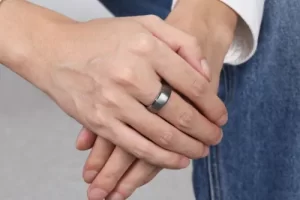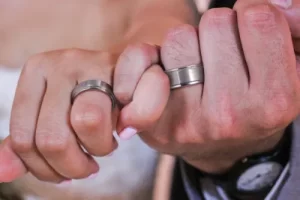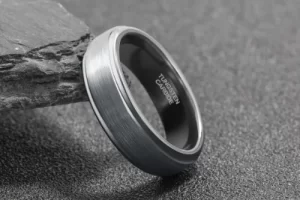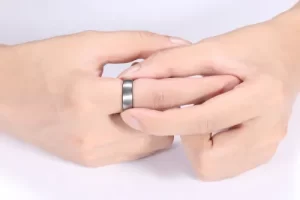Ever found yourself at a wedding, noticing how each groom wears his wedding ring on a different hand and wondered why? It’s a small detail that often goes unnoticed until it’s your turn to decide. In this blog post, we’re zooming in on this intriguing dilemma: On which hand should a men wear his wedding ring? It’s more than just a matter of choice; it’s a rich tapestry woven with cultural significance, personal beliefs, and historical traditions. As we delve into the enigmatic world of men’s wedding rings, we’ll uncover the reasons behind this diverse practice, ensuring you make an informed decision for your big day. So, let’s get started on this journey of discovery together, shall we?

The 5 Rules of Wearing Rings
Rule #1: Rings Are More Than Just Accessories
Rings aren’t just fashion statements; they’re storytellers. Whether it’s a class ring from a prestigious academy, a shiny gold ring symbolizing wealth, or a wedding band indicating your marital status, each ring you wear tells a part of your story. Remember, rings are one of the first things people notice, so be mindful of the signals you’re sending, especially in professional or unfamiliar settings.
Rule #2: Wear It With Confidence
Confidence is key when it comes to wearing rings. If you’re new to ring-wearing, start by getting comfortable with the piece at home. Gradually wear it around trusted friends, and be ready to share any special stories behind your rings. Remember, a ring can be a great ice-breaker!

Rule #3: Proportion Matters
Your ring should complement the size of your hands. Larger rings suit larger hands, while smaller, more subtle designs work best for smaller hands. Ensure your rings are proportionate to your fingers, choosing broader bands for fuller digits and slimmer ones for slender fingers. And always ensure a proper fit, especially for significant rings like class rings.
Rule #4: Harmonize Your Jewelry
Balance is crucial when combining multiple rings with other jewelry. Avoid overloading one hand; instead, distribute your jewelry evenly. For instance, if you’re wearing a watch and wedding band on your left hand, consider a bracelet on your right. Choose which finger to adorn with an additional ring carefully, usually opting for the opposite ring or index finger.
Rule #5: Coordinating Metals
While there are no strict rules for matching metals, a cohesive look can be achieved by coordinating them. Choose between silver or gold based on your skin tone: silver for cooler tones and gold for warmer ones. It’s also aesthetically pleasing to match the metal of your rings with other accessories like your watch and belt buckle. But remember, these are guidelines, not rules set in stone. Feel free to express your individual style as you see fit!

Which Hand Is the Right Choice For Wearing The Men’s Wedding Ring?
The choice of which hand to wear a man’s wedding ring on varies greatly around the world, influenced by cultural, religious, and personal factors. In many Western countries like the United States, Canada, and the United Kingdom, the tradition is to wear the wedding ring on the fourth finger of the left hand. This custom is rooted in the ancient Roman belief that this finger has a vein directly connected to the heart, symbolizing love and commitment.
On the other hand, in many Eastern European countries such as Russia, Greece, and Poland, as well as in countries like India and Venezuela, the right hand is traditionally used for wedding rings. This practice often ties back to religious or cultural reasons, with the right hand sometimes being considered more favorable or auspicious.
Personal preference and practical considerations, such as the dominance of one’s hand, can also influence this choice. Some left-handed individuals might choose to wear their ring on the right hand to reduce wear and tear.
Ultimately, the “right” hand for a men’s wedding ring is subjective and can be based on various factors, including cultural heritage, religious beliefs, and individual comfort or preference. In today’s global and multicultural society, the decision is often personal, reflecting a blend of tradition, convenience, and personal style.

Conclusion
The decision of which hand to wear a men’s wedding ring on is deeply personal and varies significantly across different cultures and traditions. While the left hand is commonly chosen in many Western cultures, the right hand is equally traditional in other parts of the world. Whether it’s on the left or the right, what truly matters is the commitment and love that the ring symbolizes.

